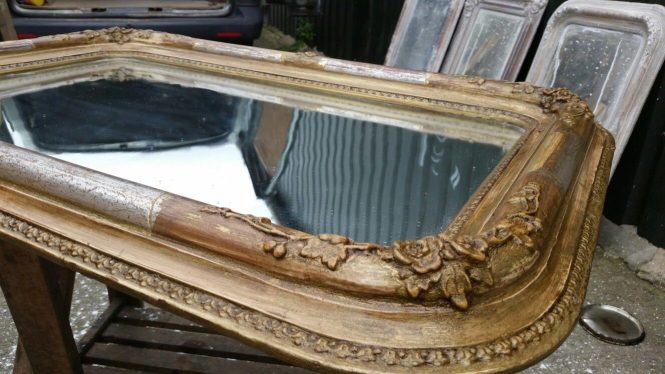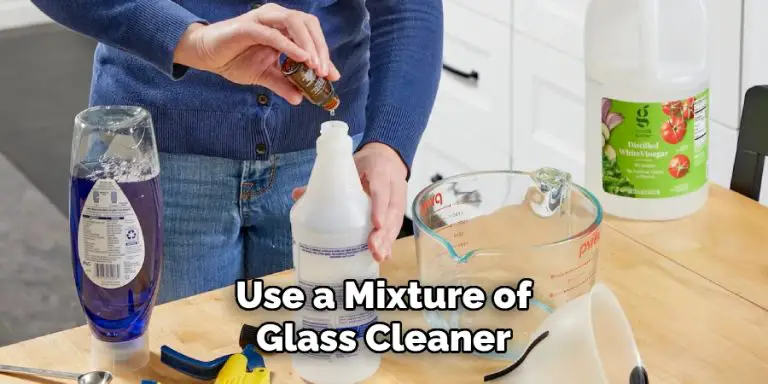

Restoring old mirrors is a rewarding endeavor that can breathe new life into treasured heirlooms. Imagine the captivating sparkle of a meticulously restored antique mirror reflecting the warm glow of a sunset, or perhaps a vintage vanity mirror capturing the delicate artistry of a forgotten era. Restoring old mirrors is a labor of love that can not only revive a piece of history but also significantly increase the value of your antique or vintage mirrors. This article tackles the intricacies of this restoration process, covering everything from identifying common issues to finding reliable restoration services. Whether you’re tackling a project yourself or seeking professional assistance, this guide will provide you with a comprehensive understanding and a step-by-step process to successfully restore your treasured mirrors. This guide will take you through the restoration process, covering important steps to consider. You’ll explore cleaning, polishing, and frame repair, examining common problems and addressing potential concerns within the restoration process. We also cover the significance of employing the correct materials and techniques to preserve the original beauty of the mirror.
Understanding the Importance of Restoring Old Mirrors
Identifying Damage and Determining the Scope of Work
Restoring old mirrors often involves more than just a simple cleaning. Thorough inspection reveals cracks, chips, or damage to the mirror glass, frame, and even the mounting hardware. Understanding the extent of the damage is critical. This determines the necessary steps and the appropriate techniques for restoration. This could include repairing the frame or replacing the glass. A professional assessment is advisable, especially with fragile antique or valuable mirrors. A skilled professional can accurately assess the damage and advise on the most appropriate course of action for restoring the mirror to its former glory. This is crucial to avoid causing further damage during the restoration process and ensuring the preservation of the mirror’s original aesthetic.
Preparing for the Restoration Process
Proper preparation is essential before initiating any restoration work. Gather all necessary materials and tools. Ensuring you have the appropriate cleaning solutions, polishes, and repair materials is vital. Consider the delicate nature of the mirror, especially antique pieces. Protecting the mirror from further damage during the process is paramount. The correct approach and techniques should be employed to ensure the mirror’s structural integrity, especially if you are handling the mirror yourself. Ensuring the area is properly equipped and protected can significantly impact the success and safety of the project.
Cleaning and Polishing Techniques
Effective Cleaning Methods
Proper cleaning methods are crucial for restoring the brilliance of old mirrors. Start by gently removing dust and debris with a soft cloth or a brush specifically designed for delicate surfaces. Avoid harsh chemicals or abrasive materials, as these can scratch or damage the mirror’s surface. Specialized cleaning solutions for antique mirrors can further enhance the cleaning process. Consider employing professional-grade cleaning agents that are designed for delicate surfaces. This ensures that the mirror is cleaned effectively without causing any harm to its structure or aesthetics. This meticulous approach is critical to preserving the integrity of your antique mirror. Using appropriate tools and methods is essential to restoring the original beauty and brilliance of the mirror.
Polishing to Enhance Sparkle
Polishing can significantly enhance the mirror’s shine and bring out the beauty of its reflective surface. Using specialized mirror polishes and a soft cloth is essential to avoid scratching the delicate surface. Focus on a gentle, circular motion to ensure even polishing across the surface. Remember to avoid excessive pressure to prevent damage. A slow, methodical approach yields the most effective results, preventing any unwanted scratches or marks to the reflective surface. This step is crucial for restoring the mirror’s reflective qualities. Utilizing the correct polishes and techniques will enhance the sparkle and brilliance of the mirror, restoring its visual appeal.
Frame Restoration and Repair
Assessing and Repairing Frame Damage
Frame restoration is an important aspect of restoring old mirrors. Inspect the frame carefully for cracks, dents, or missing pieces. Determine the best approach to restoring the frame’s structural integrity. Assess whether the damage requires repairs, replacement, or re-staining. Repairing or replacing damaged elements ensures the frame’s stability and aesthetic appeal. Carefully consider using materials that complement the existing style of the frame, avoiding alterations that compromise its original design. It’s essential to use matching materials, avoiding the introduction of elements that clash with the original design. Consider the aesthetic integrity of the piece in order to choose the correct approach and materials for repairs.
Re-staining and Refinishing for Optimal Results
Re-staining and refinishing the frame can revitalize its appearance. Select matching stain colors to maintain the mirror’s original aesthetic. Applying multiple thin coats of stain and allowing each coat to dry properly is vital for achieving a consistent finish. A professional touch can further enhance the quality and appearance of the re-staining and refinishing process, bringing the frame back to its former beauty. This step is crucial for restoring the original look and appeal of the mirror frame.
Seeking Professional Assistance
Expertise and Quality Work
Restoring intricate or highly valuable old mirrors often benefits from professional assistance. Qualified professionals possess the necessary skills and experience to tackle complex restoration projects. They utilize specialized tools and techniques, potentially leading to better preservation of the mirror’s integrity. Their expertise is invaluable, especially when handling delicate antiques or complex restoration projects. This often leads to a high quality and long-lasting result. Finding reputable restoration services is key to successful restorations.
Finding a Reputable Mirror Restoration Service
Research and compare local restoration services specializing in antique mirrors. Look for reviews and testimonials from previous clients. Seek recommendations or referrals. Choosing the right professional ensures that you’ll receive a high-quality restoration and preserve the mirror’s original integrity for future generations. Carefully weigh the pros and cons of different options. Consulting reputable resources or checking online reviews can help narrow down the search.
Ensuring Long-Term Preservation
Protecting the Restoration
Once the restoration is complete, proper storage and handling are vital to preserve the newly restored mirror. Store the mirror in a clean, dust-free environment. Positioning the mirror to protect it from potential damage or scratches is essential. This will enhance the mirror’s lifespan and its visual appeal. This preservation approach safeguards the mirror’s condition, ensuring its appearance is maintained for years to come. This will protect the restoration and ensure the piece is cared for properly.
Understanding Potential Issues
Understanding potential issues or concerns can help proactively maintain the restored mirror. Regular cleaning, storage in a stable environment, and preventative maintenance can prolong the life of the restoration. Regular checks are necessary to prevent future issues from emerging.
Additional Tips
Choosing the Right Materials
Using appropriate materials is crucial for effective restoration. Employing high-quality cleaning solutions, polishes, and repair materials ensures a lasting restoration.
Safety Precautions
Always prioritize safety during the restoration process. Use protective gear where necessary and ensure a clean and safe working environment. Working safely with the mirror is important to avoid unwanted damage or accidents during the restoration process.
Conclusion
Overview
Restoring old mirrors is a rewarding journey. Through meticulous care, appropriate techniques, and proper planning, you can restore your treasured mirrors to their former glory. We hope this comprehensive guide has been helpful in your restoration endeavor. Prioritizing safety and engaging with experts when needed is important for successful restorations.
Frequently Asked Questions
How long does it take to restore an antique mirror?
The restoration time for an antique mirror depends significantly on the extent of the damage and the complexity of the restoration process. Minor issues might be addressed quickly, but extensive restorations involving repairs, frame replacements, or re-polishing may take several weeks or even months. The level of craftsmanship and expertise required will be a key factor in determining the timeline. A professional can better estimate the timeline based on the specific requirements of the mirror and the nature of the damage.
What are the costs associated with restoring an old mirror?
Costs depend on several factors: the severity of the damage, the type of mirror (antique vs. vintage), whether professional assistance is required, and the extent of the work needed. Consult with professionals to determine a precise estimate for the full restoration process. A professional consultation will give a clear understanding of the costs involved, making it an important step in the process.
Restoring old mirrors can be a rewarding experience, providing a unique opportunity to breathe new life into treasured heirlooms or vintage finds. By understanding the steps involved and taking the necessary precautions, you can successfully restore your mirrors to their former glory. Remember to prioritize safety and choose reputable restoration services if needed. If you’re ready to embark on this journey, start by researching local mirror restoration professionals or contacting a restoration service to get a quote. Many restoration businesses specialize in antique mirror restoration and can provide valuable insight into the best methods for your specific mirror.